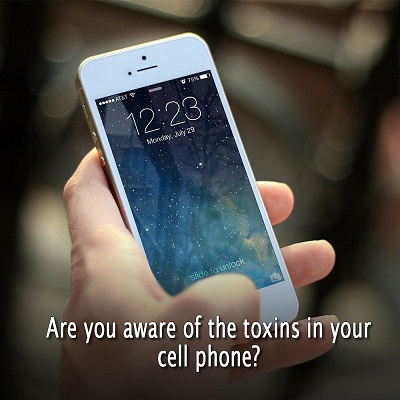 Cell phones are one of the most ubiquitous items of the 21st century. Almost everyone owns a cell phone, and much of our daily activities revolve around our cell phone use. We use cell phones for a variety of reasons. We install apps to help us do almost everything and anything!
Cell phones are one of the most ubiquitous items of the 21st century. Almost everyone owns a cell phone, and much of our daily activities revolve around our cell phone use. We use cell phones for a variety of reasons. We install apps to help us do almost everything and anything!
They monitor our health, fitness, our finances, keep notes, keep us updated on the latest happenings around the world… and yes even more than all that! Twenty years ago, some of us owned a cell phone, today they are a part of everyone’s lives.
As we all know, different electrical components make up our ‘can’t-live-without’ cell phones, such as printed circuits and wires, buttons, lights, and battery. Concern about the health effects from toxins found in these parts, and cellphone usage in general, has grown over the recent years, along with the number of hours we spend using cellphones and other electronic gadgets.
This then begs the question – are cellphones toxic to our health?
With the ever-growing dependence on our cell phones, we might wonder how much of our health is being affected by it. Thanks to science, we now have a better understanding of cellphone toxins and how they can affect our health.
Toxins Found in Cell Phones
Different studies have concluded that all cellphones on the market today contain toxins, even those that are labeled as ‘green’ or eco-friendly. Cellphones typically have one (or all) of the following toxins:
Lead
Lead is used in the cell phone’s battery and the crystal displays and its circuit boards. Lead exposure has been linked to kidney damage, reproductive problems, blood, and nervous system damage. Even a low level of exposure to lead can cause health problems in the long run.
Mercury
Mercury is another toxin found in the cell phone’s battery, crystal displays, and circuit boards is mercury. A cellphone unit will typically contain around 2 grams of mercury, increasing a person’s risk of brain and kidney damage.
Arsenic
Arsenic is found in the cell phone’s microchips, exposure to arsenic can lead to liver damage, as well as health problems connected to the nervous and respiratory systems. Arsenic exposure can cause skin lesions.
Cadmium
Cadmium is typically used in cellphone batteries, cadmium exposure has been linked to different cognitive, behavioral, and neuromotor skills problems among children. Cadmium exposure has been found to increase the risk of kidney damage.
Chlorine
The plastic parts of cell phones usually contain chlorine, specifically PVC or polyvinyl chloride. Chlorine exposure can lead to damage to our tissues and cells.
Bromine
Bromine is another toxin commonly found in cell phone parts, exposure to bromine may be associated with cognitive and developmental problems among children.
Exposure to Cell Phone Toxins
Our exposure to these toxins found in cell phones is not as direct as you might fear. Simply using these cell phones does not necessarily expose us to these toxins. However, these chemicals can leach their way into our environment, making us vulnerable to exposure.
According to research, chemical exposure in cell phones is the highest during its production and when it is time to dispose of them. Workers in manufacturing plants have a higher risk of exposure to these chemicals while manufacturing and assembling these gadgets in factories. In some cases, workers lack safety hazard protection against exposure to these chemicals, as not all countries have similar regulations of these toxic materials.
Cell phone users become more subject to toxin exposure when these units are not correctly disposed of. Landfill conditions can allow cell phones to leak and emit toxins, and these chemicals can contaminate the soil, water, and air. Contamination by these chemicals can make its way to the food chain, causing damage to vegetation, animals, and humans.
Many believe that cell phones are easier to dispose of because of their size, unlike other bigger and bulkier gadgets. Environmental experts urge people to dispose of their cell phones properly through designated e-waste recycling companies to avoid leaching and contamination caused by these gadgets.
Unfortunately, the lack of legislation laws and law enforcement agencies governing chemical wastes in various countries worldwide often makes it more difficult to dispose of cell phones properly.
The bottom line is that chemical toxins make up our cell phone parts. Using cell phones does not necessarily cause toxic overload. However, the chemicals found in these gadgets can contaminate our environment when they are not correctly disposed of. Consumers’ insatiable demand for the latest devices also doubles the amount of wastes cell phones create, making them much more challenging to dispose of safely.






